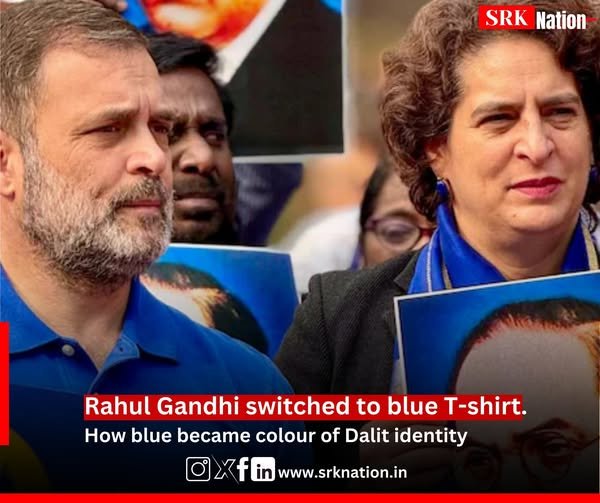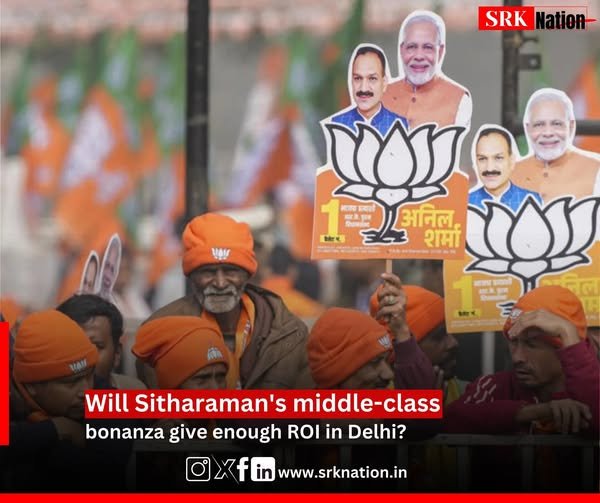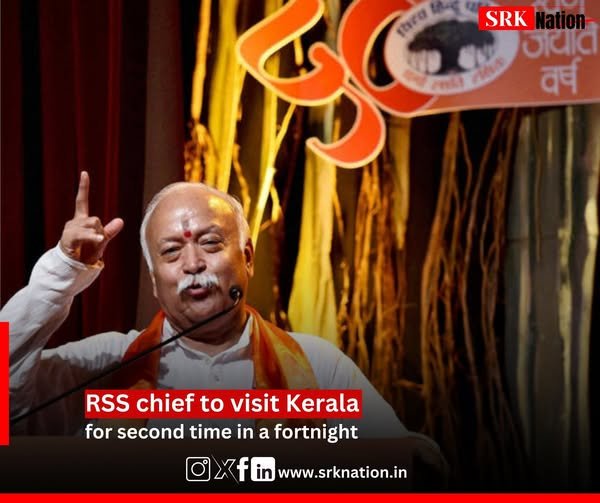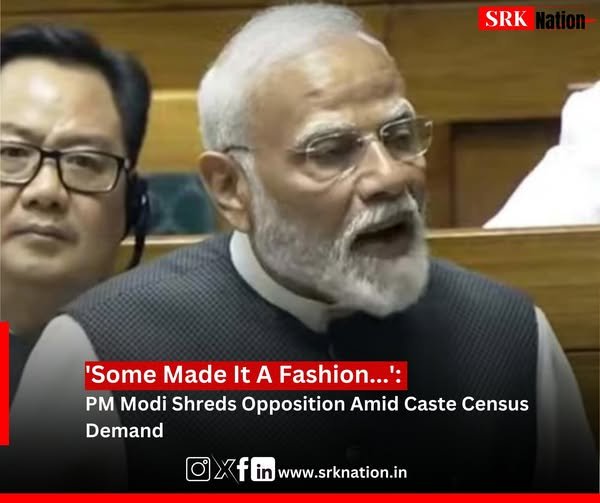After a year in his signature white T-shirt through biting cold and rain, Congress leader Rahul Gandhi on Thursday switched it for a blue T-shirt. Not just Rahul Gandhi, most other Opposition MPs, were spotted in blue amid the ongoing political slugfest over Dalit icon BR Ambedkar.
While Rahul Gandhi, on Thursday, dashed onto Parliament premises in a blue polo T-shirt, his sister Priyanka Gandhi Vadra was seen draped in a blue saree. They marched with other Congress leaders with portraits of BR Ambedkar, demanding an apology and resignation from Home Minister Amit Shah over his remarks in the Rajya Sabha on Ambedkar.
Amid the protests by blue-donning MPs, one might wonder how the colour came to be associated with Dalit identity and resistance? How did it become synonymous with Ambedkar’s legacy?
BLUE REPRESENTS DALIT IDENTITY
BR Ambedkar, the chairman of the Constitution’s drafting committee, who laid down the framework assuring its citizens of justice, equality, and liberty, and endeavours to promote fraternity among them, is depicted in blue in all statues and photographs across the length and breadth of India.
Be it the 2018 Dalit marches protesting the Supreme Court ruling that ‘diluted’ the Scheduled Caste and Scheduled Tribe (Prevention of Atrocities) Act, 1989, or the nation-wide protests following the suicide of Dalit scholar Rohith Vemula in 2016, blue flags have been the most striking symbol of Dalit resistance in recent years.
In one notable instance, an Ambedkar statue in Uttar Pradesh, whose sherwani was painted saffron, was swiftly repainted blue by a local Bahujan Samaj Party (BSP) leader in 2018.
This brings us to the Mayawati-led Bahujan Samaj Party, which prominently features blue in its symbol and flags. The Chandrashekhar Azad-led Azad Samaj Party (Kanshi Ram) has also embraced the same colour, symbolised most notably by the blue gamcha that the Kairana MP wraps around his neck.
This brings us to the question: why blue? How did it evolve to become such a powerful symbol of Dalit identity and resistance?
HOW DID BLUE BECOME A COLOUR OF DALIT IDENTITY?
While there are multiple theories and explanations for this association, its origins likely trace back to the days of Ambedkar himself.
“Blue was his favourite colour, and he mostly used it in his personal life too,” Lalji Nirmal of Ambedkar Mahasabha, told news agency PTI in 2018.
Besides being Ambedkar’s favorite colour, retired IPS officer and Dalit activist SR Darapuri said that blue was also the colour of the flag for the Scheduled Castes Federation of India, the party Ambedkar founded in 1942.
“The flag was blue and had an Ashok Chakra in the centre…, later in 1956, when the Republican Party of India was set up after dissolving the earlier party, it was also given the same blue flag,” Darapuri said.
“Blue, in another shade, is also the colour of the sky, which shows vastness and that was the vision of Baba Saheb,” he added.
The Republican Party of India, now headed by Union Minister Ramdas Athawale, still has the blue flag as its symbol.
Another explanation points to a more philosophical rationale for blue being a crucial colour of Dalit identity.
“The idea behind it was that blue is the colour of the sky, a representation of non-discrimination, that under the sky everyone is believed to be equal. There are many theories around this, but there is no settled history on why blue became the colour of Dalit resistance,” Raosaheb Kasbe, a political science professor at the Savitribai Phule Pune University, was quoted as saying in a 2018 report on SabrangIndia, a human rights news portal focussing on gender and Dalit rights.
Kancha Ilaiah, a Dalit rights activist, also points to the philosophical rationale underlined by Kasbe, suggesting it could have been the reason behind blue becoming the colour of Dalit identity.
“I read somewhere, I don’t remember where exactly, but I read that Ambedkar had said that the blue sky is all over us. Just like how Dalits, Shudras and tribals are all over the country. We should therefore claim this universal colour as our own. We are all equal under the blue sky,” Kancha Ilaiah, was quoted as saying in the 2018 SabrangIndia report.
Since then, in Indian politics, blue has been more than just a hue.
As Rahul Gandhi swapped his white tee for blue, the symbolism wasn’t lost, least of all on the Congress, which benefited from the power of blue in the 2024 Lok Sabha election.

See insights
Boost a post
Like
Comment
Send
Share






